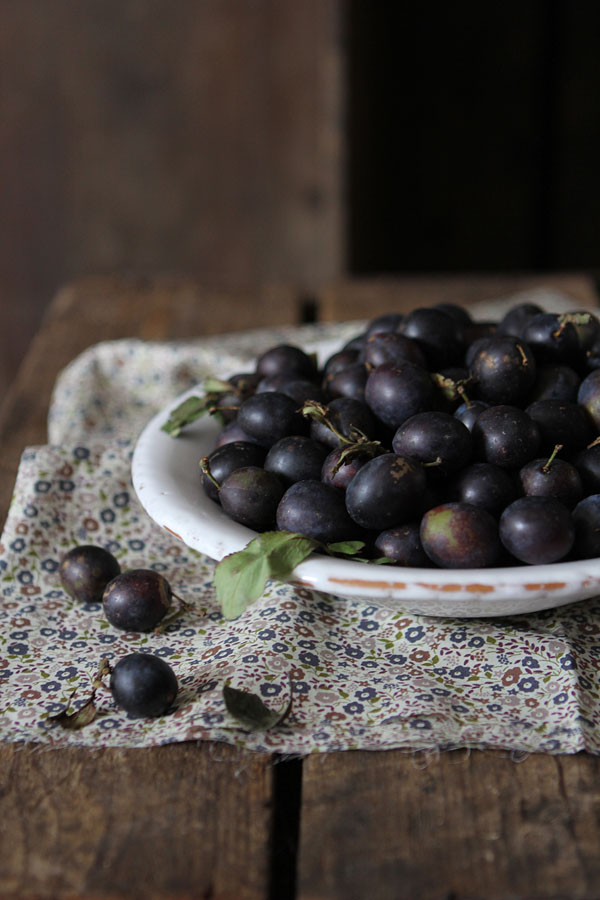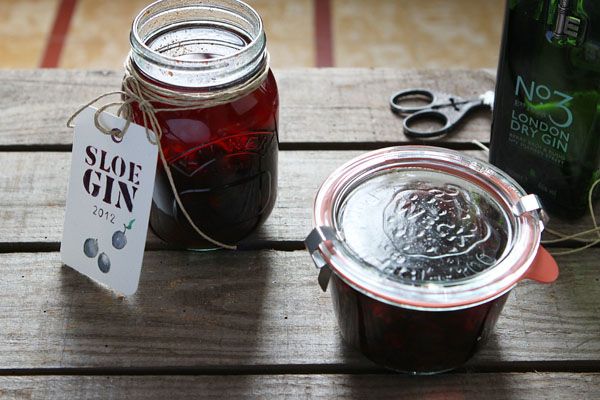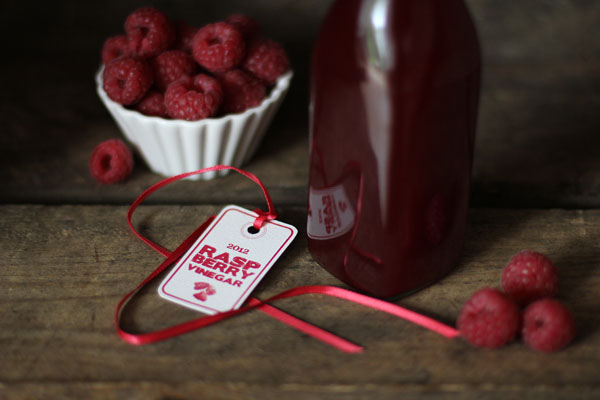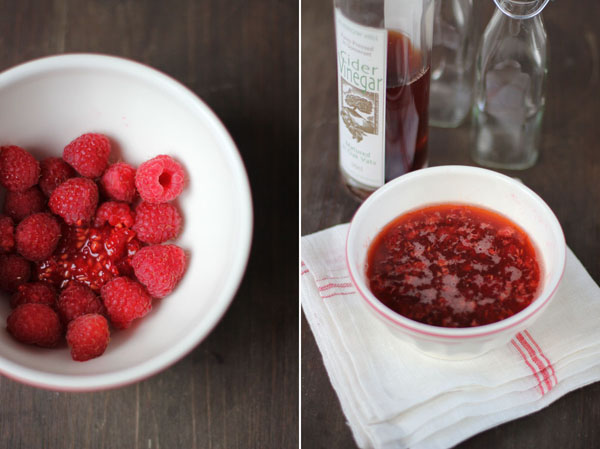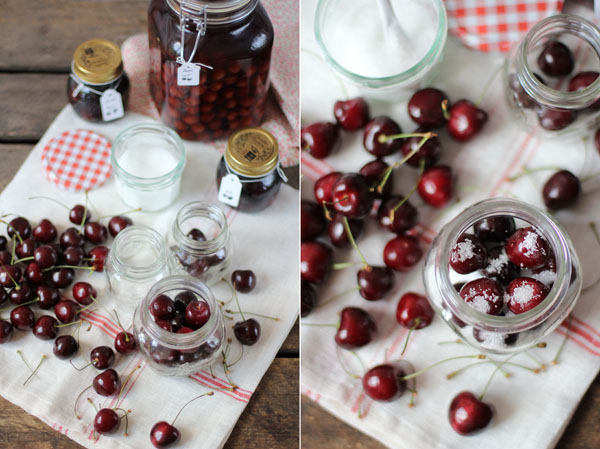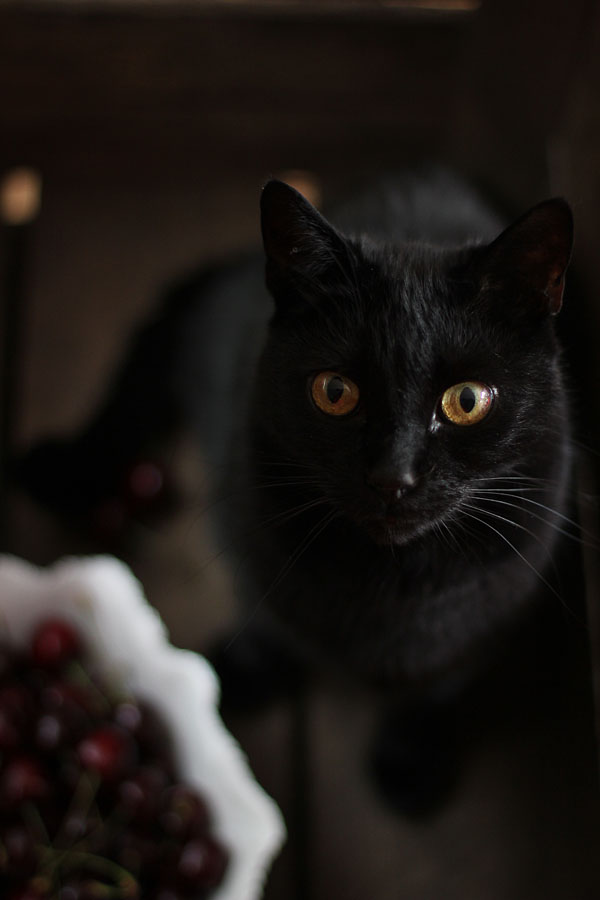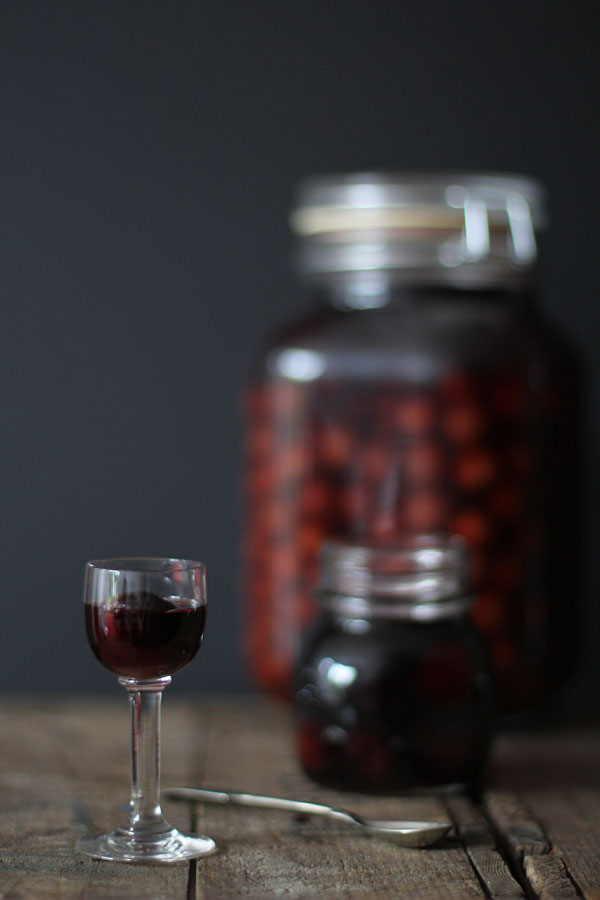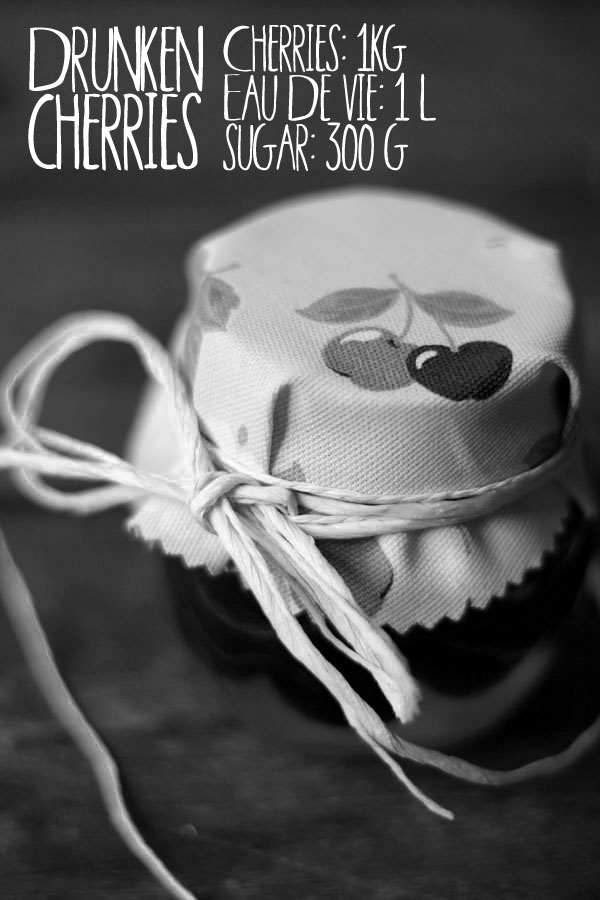The post I had my mind set on Sloe Gin appeared first on Miss Foodwise.
]]>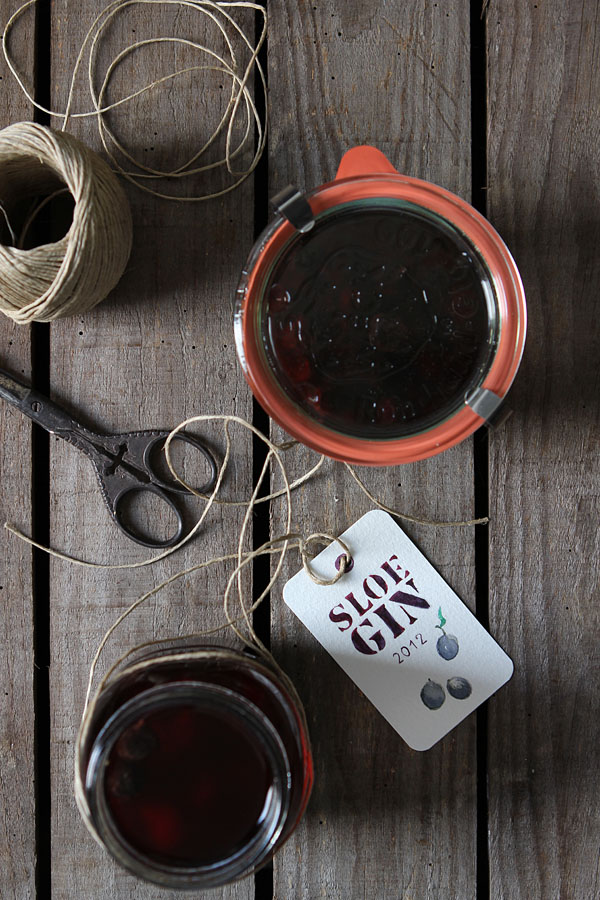
I had sloes on my mind the last two times we drove up to Kent…
On both occasions I went home without them…
My eyes were on honesty boxes by the road, people selling produce from their garden at car boot sales and little blue-ish dots in the trees we drove passed.
The location of sloe trees is a well guarded secret of those who have discovered them on foraging trips. This makes them even more mysterious to me, I just had to have some sloes. I heard stories saying the native British sloe is so very rare it only grows from ancient trees. They look like black olives, and like olives best not eaten straight from the tree. Sloes are very tart and mostly used to make jams to accompany cheese and for making sloe gin…
The
sloe or ‘Prunus Spinosa’ is a berry from the blackthorn. Sloes or blackthorns were planted
around the countryside in the 16th and 17th century as hedges around the
fields to keep the cattle in. The word ‘sloe’
comes from the Old English slāh, in Old High German slēha and in Middle Dutch sleuuwe.
Traditionally when making sloe gin,
the berries must be gathered after the first frost and one must prick
each berry with a thorn taken from the blackthorn bush. Sloe gin is made
by infusing gin with the berries. Sugar is required to ensure the
juices are extracted from the fruit. Some swear by freezing the berries
before use.
But I had no sloes…
Until a lovely lady offered to send me some of the sloes she had gathered to maker her own boozy preserves. I must say I was quite nervous for them to arrive as they are after all perishable. Luckily they weren’t reduced to jam and I was able to use them thanks to Claire who froze them for the journey. That same day the sloes would be drowned by Gin…
It is so easy to make, the hard part is keeping yourself from opening it too soon to drink it. I’ve been told a ten year old sloe gin has a wonderful flavour… so I decided to hide a bottle from myself so I can actually try it. I think I might put it behind my 8 year old cherry brandy I was able to save.
To Make you own sloe gin!
What do you need
500g ripe sloes
250g sugar
1 litre of Gin, I used No.3 London Dry Gin
Method
- Prick the sloes with a thorn from the tree or a toothpick
- Put them in a suitably sized Kilner or jam jar
- Pour over the
sugar and the gin - Close the lid
- Shake and shake every day until the sugar
has dissolved - Store in a dark cupboard
After 3 months
- Strain out the sloes using muslin, bottle and store in a dark
cupboard - Try to wait 1 to 10 + years before opening a bottle.Thank you Claire for the sloes, I will drink to your health when I open a bottle!
You might also like
Cherry brandy
Raspberry vinegar
The post I had my mind set on Sloe Gin appeared first on Miss Foodwise.
]]>The post Raspberry Vinegar – Summer in a bottle appeared first on Miss Foodwise.
]]>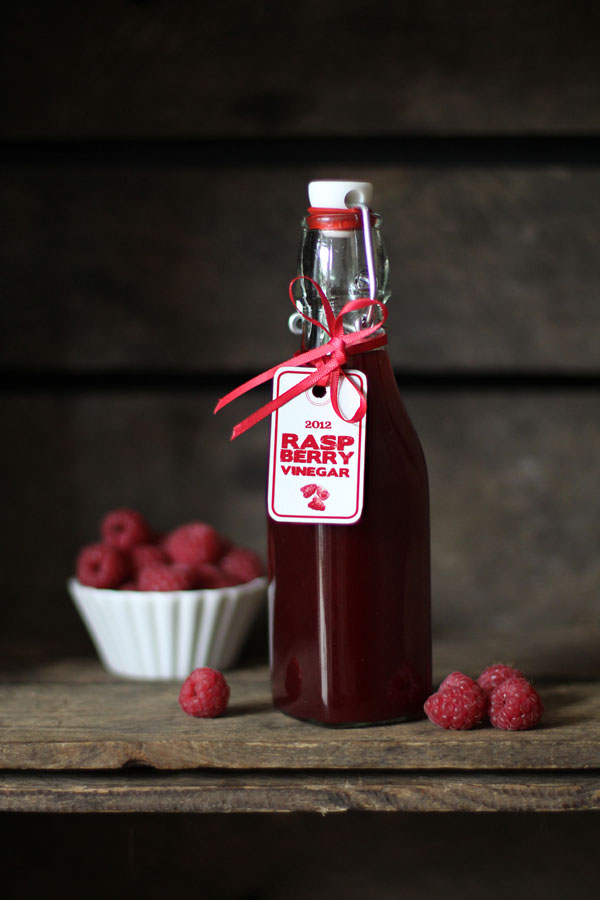
As the end of summer is approaching I feel the urge to start preserving things for the winter months to come.
I made Cherry brandy to enjoy at the christmas holidays and next week the damsons are going into the copper kettle to become a gooey jam to use in pies.
This is how I hang on to those months when we had plenty of light and warmth from the sun, colorful delicate fruits at the market and fresh strawberries on our bread.
Summer in a bottle or a jar.
When autumn has deprived us of the last of the warm days, I will make a salad with perhaps some quail and walnuts, this raspberry vinegar will be used to drizzle the green leaves with a radiant red color. Like blood it will be dripping on my plate and I will remember the summers day when I bought the raspberries at a farmshop in Kent and the lunch we had after we strolled trough the little village by the sea. The Cider vinegar came from a road trip to the Cheddar gorge on my parents 35th anniversary and is the tastiest I’ve ever found. Memories are stored in this bottle if you like, if you are as romantic about it as me.
This recipe for Raspberry vinegar is fuss free and takes minutes to make, you only need to let the vinegar rest for 4-6 days before you strain and bottle it.
I used Isabella Beeton’s 1860’s recipe as a guide and amended where needed. As she uses a lot of sugar in hers, I didn’t in mine and I find the vinegar doesn’t need it.
Raspberries
are a rich source of vitamin C, B, iron and magnesium. Up to 20 percent
of their total weight is made up of fiber and they are also high in
antioxidants. The leaves of the raspberry plant have been used for
medicinal purposes for generations.
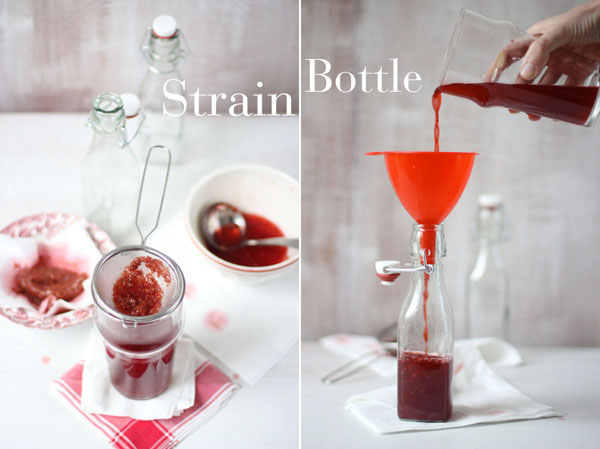
What do you need
To make 1 bottle as shown in the picture:
100g of raspberries or leftover raspberry pulp.
25 cl of good quality cider vinegar
a strainer
a funnel
a ceramic bowl
Method
Rinse the raspberries
Place the raspberries in a ceramic bowl
Crush the fruit with a fork
Add the Cider Vinegar until your bowl is completely full
Cover the bowl with cling film
Leave in a cool dark place for 4-6 days
After 3 days
Strain the vinegar and discard the pulp
Transfer the vinegar to the bottle(s) using a funnel
Leave for a month in a cool dark place, it will be autumn by then.
The vinegar will keep for at least six months.
Lovely with salad with quail, goats cheese and also with ice-cream. But I like a little spoonful from time to time… Some claim it is good to cure a cold.
You might also like
Make your own cherry brandy
Make your own butter
The post Raspberry Vinegar – Summer in a bottle appeared first on Miss Foodwise.
]]>The post Drunken cherries – make your own cherry brandy appeared first on Miss Foodwise.
]]>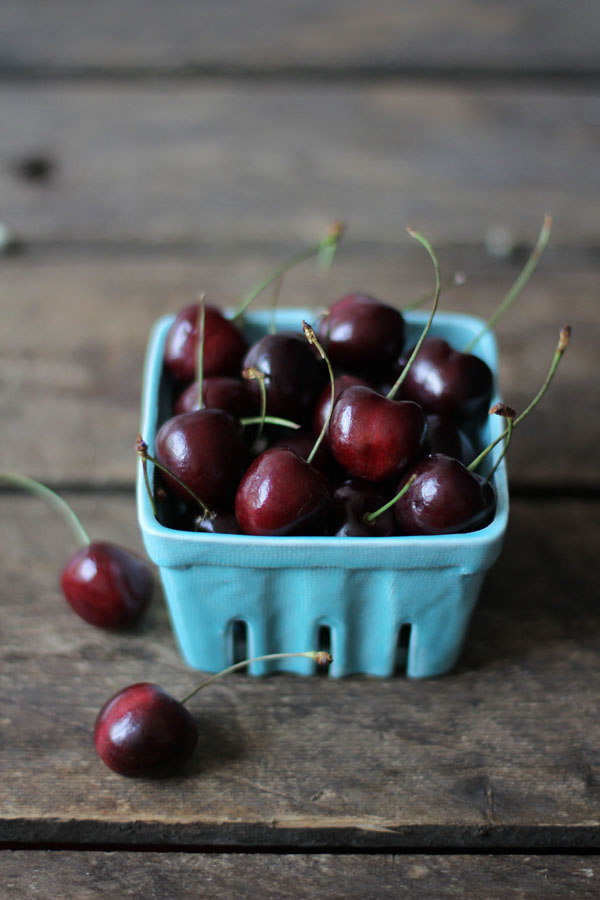
Preserving cherries for later, for generations to come.
“My top way of eating cherries is a bowl of cherries. If good, they need no adornment, other than perhaps a glass of pink champagne.”
Fergus Henderson.
Before the second world war there were about 40 000 acres of cherry orchards in Britain. These were mainly in Kent, Worcestershire and Herefordshire.
The past 50 years however 90 % of these cherry orchards have disappeared.
The labour was very intensive as the trees were very high, too high to cover the crop from the birds. I were mostly women who harvested the cherries on high ladders with baskets tied to their waists.
To tackle this problem nowadays and to revive cherry growing, dwarf plants are planted to replace the towering trees. The dwarf trees are covered with netting so the birds can’t steal the crop and the orchard has a maximum yield.
The people from Food Lovers Britain have started ‘CherryAid’, a campaign to point out to the supermarkets and consumers that the British cherry needs our attention and preservation. Since the campaign started most of Britain’s biggest supermarkets like M&S and Tesco are selling British cherries and Waitrose has stated that imported cherries will be phased out completely for the five week the British cherry season.
So it’s fair to say, British cherries are on their way of being saved for future generations.
Britain however is not the only country in danger of loosing their native fruit, in Belgium you can’t even get Belgian cherries in the supermarket. You find them rarely at the market. A lot of cherry growers in Belgium leave their crop rot on the trees because it’s too expensive to pick them for the price they will get for them. Such a shame that the most famous ‘Schaerbeekse cherry’ has been lost for ever, this was the variety used for the typical Belgian cherry beer. Instead of finding another Belgian cherry, most of the breweries choose to import the cherries from Poland. Only a small number of cherries used for the beer today are Belgian.
Most of you will try and buy ‘local’ or British cherries, I’m sure.
I love how the cherry season transforms the roads of Kent with cherry
signs and little stalls packed with punnets of cherries. The sellers
sitting there, usually seeking shelter from wind and rain under a bright
umbrella, reading a book.
Below some interesting links to explore:
Brogdale farm has an annual Cherry festival celebrating the British cherry and
Food Lovers Britain – ‘CherryAid’ a campaign to put British cherries back on the map.
Great British Food Revival Cherries and Walnuts
Rent a cherry tree
Cherries come in two types: sweet and sour. My mum and I used to make this cherry brandy and the recipe is handed down by my grandmother. For cherry brandy it’s better to use the sour variety however you can use the sweet ones and slightly decrease the sugar you use. Or not, if you like it very sweet!
So what about you? What do you like to brew?
What do you need
cherries: 1kg
Eau de vie or Vodka: 1liter
sugar: 300 g
sterilised jars
Method
• rinse the cherries well
• cut of the stalks leaving 1cm still on the cherry, that way the brandy will keep longer as
the cherries stay nice and firm.
• layer the cherries with the sugar
• pour over the alcohol and close the jar
• put in a dark place at room temperature and shake every day for a week
• forget about the cherries until christmas or thanksgiving!
I have jars that date back to 1999, these cherries are very very strong!
Enjoy in a little glass or why not with a scoop of ice cream…
You might also like
Strawberry and Pimm’s granita drink
Blaeberry pie
Please leave a comment, I love reading them!
The post Drunken cherries – make your own cherry brandy appeared first on Miss Foodwise.
]]>